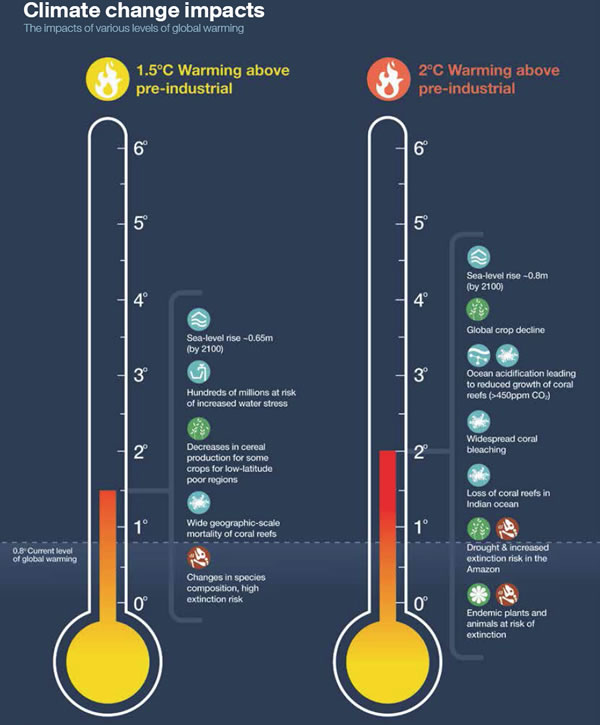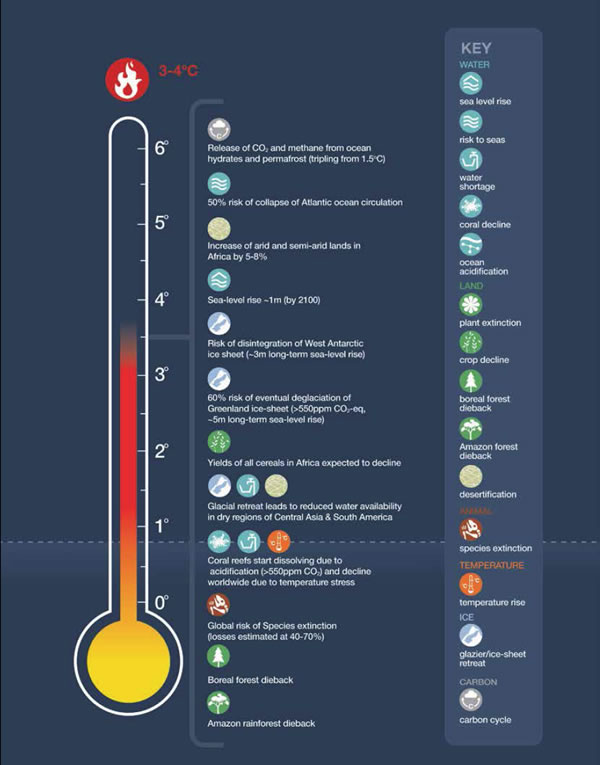|
New evidence is emerging of just how deadly and expensive overshooting 2ºC could be for the planet. The impacts from the current level
of warming are already severe enough to frequently cause great human tragedy.
The massive storm named Hurricane Sandy, which hit the eastern coast of the US in October 2012, is one consequence of climate change. Approximately
200 people died in the US and in the Caribbean, where Sandy also struck. Millions of people were affected. 300,000 houses were destroyed
in New York State alone, businesses and jobs were disrupted, and electricity was cut for days. The states of New York and New Jersey alone
expect the costs of Sandy to total $62bn US dollars.
In addition, scientists now agree that recent catastrophic weather events – such as the heat waves in Europe in 2003 that killed
70,000 and the droughts in the US state of Texas in 2011 that caused $5bn in damage – are a consequence of human-induced climate
change. The 2012 US drought resulted in a significant reduction in the corn crop, which will cause food prices to rise– an increasingly
common consequence of climate change. Extreme weather events will only become more frequent and more severe as temperatures continue to
rise.
With the average global temperature already about 0.8ºC above pre-industrial times, a report by the humanitarian organisation DARA
has calculated that 5 million deaths a year are now caused by air pollution, hunger and disease, as a result of climate change and carbon-based
economies. This in a world where the temperature increase has not hit even 1ºC, let alone 2ºC or more.
The world’s poorest nations are the most vulnerable, facing increased risk of drought, water shortages, crop failure, poverty and
disease. The DARA report estimates that current climate impacts cost the world $80bn in 2010, when climate-induced natural disasters, labour
productivity losses, health impacts, and losses to industries such as agriculture, are considered.
Bangladesh’s Prime Minister Sheikh Hasina said: “One degree Celsius rise in temperature is associated with 10% productivity
loss in farming. For us, it means losing about 4 million metric tonnes of food grain, amounting to about $2.5bn, that is about 2% of our
GDP.”
Spikes in food prices will get worse and more frequent as extreme weather events caused by climate change devastate food production. Droughts
in the US Midwest and Russia in 2012 helped to push prices for maize and soyabeans to record highs. The UN’s food agencies have urged
world leaders to take swift action to ensure that food-price shocks do not turn into a catastrophe that could hurt tens of millions of
people. The agencies said the 2007/08 price spike contributed to an 8% rise in the number of undernourished people in Africa.
If the 2°C target is surpassed, the impacts already being experienced will be much worse, and some new impacts will occur. A large-scale
rise in sea levels is likely to be triggered somewhere between a 1.8ºC and 2.8ºC increase. This would threaten the existence
of lower-lying islands. Beyond 3.5ºC, the sea-level rise would be up to two metres, a height that would threaten many more coastal
villages, towns, and cities. Most corals will bleach, and widespread coral mortality is expected if the temperature rise goes to 3°C
above the temperatures recorded in the late 19th century. Up to 30% of global species will be at risk of extinction, and the figure could
exceed 40% if the increase surpasses 4°C.
Warming of over 4°C would be catastrophic, as various tipping points are expected to be triggered at this level. For example, if the
Amazon dries, it will release further CO2. Rising Arctic temperatures will also lead to CO2 and methane being released through the permafrost
thawing, with the potential to eat up more than 10% of the remaining carbon budget. Climate change would most likely become impossible
to stop, and large parts of the planet would become uninhabitable.
These potential impacts from failing to act on climate change show just how important it is to step back from the point of no return.


|